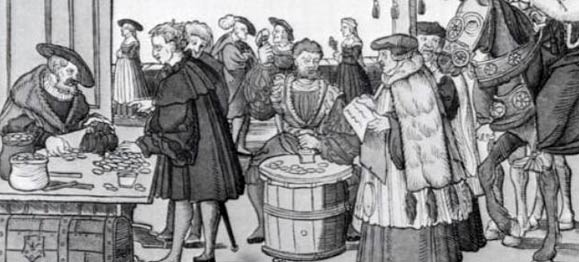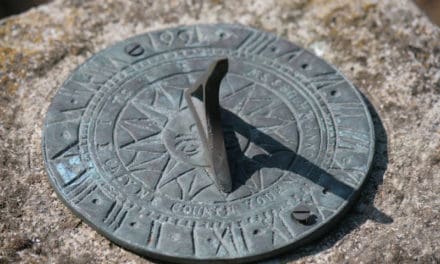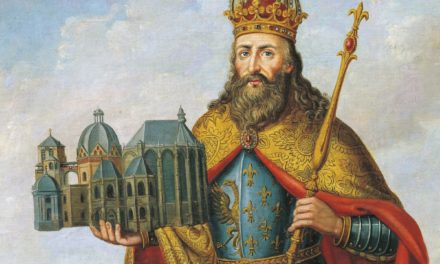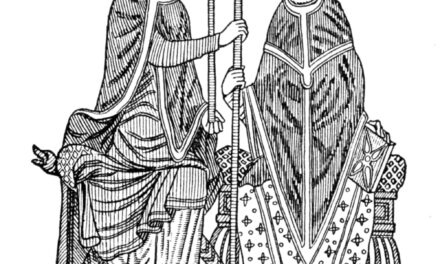The title of this episode, Part 6 in the Series 500 Yrs, in commemoration of the Half-Millennial anniversary of The Reformation, is “The Way It Was;” a brief look at popular religion of the Middle and Late Middle Ages in Europe.
We’ve spent most of our time in this series on the Reformers, many of whom were professional clergy before they broke with Rome.
A fair question to ask is, “What was religion like for commoners, peasants; the vast majority of the population?”
Since it was only the clergy and a handful of the nobility who could read, people didn’t attend Bible studies. Their religion was something designed and promulgated by The Church. It centered on the veneration of saints, especially Mary, relics, pilgrimages, & the quest to capture the Holy Land.
As the Faith spread, the Church made use of Europe’s pagan heritage. The old shrines and festivals were co-opted to Christian use. While theologians understood the difference between the Trinity and saints, the distinction was lost on the peasantry. The old gods were subsumed under saints names and holidays commemorating their martyrdom. Pagan temples became churches.
The 12th C saw a surge in the importance of the Virgin Mary as central to the religious devotion of the common people. Both God the Father and God the Son, as males, were cast as angry deities worked up about sin and ready to swat down the wicked. Mary was a mother who’s tender mercy stood between these angry guys and helpless humans. She interceded with Her Son, because what son can say “No” to his mama?
So Mary’s role as an intercessor was advanced. When it was declared she was so holy she’d ascended bodily into heaven, her cult grew since she now transcended time and space. While the use of beads as a prayer device had been going on for some time among in monasteries, the rosary with its prayers to the Virgin, was added as a practice for all Christians in the early 13th C.
In the popular mind of the average European peasant of the Middle Ages, It may have been Jesus’ work on the Cross that atoned for sin, but it was Mary’s intercession that secured that salvation to the needy soul. And that, only after each person had done their utmost to compensate for their sin through confession and penance.
That’s where priests came in. People believed unless they died in a state of sinlessness, they’d have to go to Purgatory, where they’d be tormented for ages. That much desired sinless state was attained by confessing your sins to a priest, then doing the penance he specified; 50 Ave Marias and 20 Pater Nosters, or whatever.
But of course, no one could remember every sin they’d committed, even if they went to confession every day. So all those unconfessed sins added to one’s time in Purgatory. Then some clever cleric came up with the idea that people could secure relief from these forgotten & unconfessed sins by drawing on the excess holiness of the saints. While most people had a holiness deficit, there were special people; Jesus, Mary, the Apostles, Saints, popes, etc. who’d done way more good in their lives than their own faults and foibles needed. All this extra goodness and spiritual merit went into a kind of heavenly reservoir called the Treasury of Merit. Since Jesus gave Peter the Keys of the Kingdom, and he’d passed them on to his successors, that mean the pope had the authority to transfer some of this surplus merit to the needy. He did this through his agents, priests and special representatives who’d occasionally make the rounds selling certificates called Indulgences.
These either dispensed with the need to do penance, or in the late Middle Ages, were used as a way to buy a deceased loved one’s way out of Purgatory.
One of the ways people could do penance and score major points was by going on a pilgrimage. The goal of such journeys was some shrine or cathedral housing a religious relic. The cathedral of Cologne, for instance, had several relics, the most important of which was a reliquary, a gold covered box, said to contain the bones of the 3 Magi.
The trade in relics exploded with people of every social level desiring some memento they could own that would accrue to them divine favor. The more famous the saint it belonged to, the more expensive. Clever entrepreneurs came up with all kinds of supposed relics with varying prices to satisfy the religious itch of everyone.
Merchants carried splinters of the true cross as protection form highwaymen. Knights carried saints’ teeth, finger bones, & hair in the hollow of sword hilts. People could buy drops of Jesus’ bloody sweat, or the Virgin’s milk at local faires.
Every church needed a relic for its altar. When cities realized there was profit to be made from pilgrimages, they began stealing relics from other towns in the hope it would increase traffic.
Martin Luther’s patron, Frederick of Saxony, had amassed a huge and valuable collection of relics. When the Reformation took hold, one of the first things to go bye-bye was the trade in relics.
The pilgrimages Europeans made during the Middle Ages in pursuit of penance or out of a desire to rack up some divine favor, became increasingly popular. The grand-daddy of all pilgrimages, of course, was to the Holy Land. But that was both an expensive and dangerous proposition. So Pilgrimages were designed within Europe itself. The most popular Western destinations were Rome, Canterbury & Santiago de Compostela in Northern Spain. The pilgrimage routes were carefully arranged, with hostels spaced out along the way. A pilgrimage was usually a light-hearted affair. Pilgrims were a kind of spiritual tourist who travelled in groups and stopped at frequent shrines along the way.
Earlier I mentioned that the peasantry was illiterate. Their entire understanding of the Christian Faith came from the local priest told them. Those priests, while usually literate themselves, did not read the Bible. They may have read it during their first year as a monk novitiate. But after that clergy mainly read & studied Peter Lombard’s 12th C work known as The Sentences. Lombard collected the marginal notes and glosses notable scholars had left in their Bibles. These notes were a kind of commentary on the scriptures. To get an idea of what The Sentences were, imagine you collect the Bibles of a dozen of your favorite Bible teachers. You then carefully cull their marginal notes in order from Genesis to Revelation. Now, remove all Bibles, so that all that’s left is your collection of notes. That’s what the Church used as it’s authoritative text from the 12th through 15th C. People weren’t being taught God’s Word. They were being taught AS God’s Word the commentary of religious scholars.
No wonder the theology of the Late Middle Ages was messed up and desperately needed reform. And no wonder when Eastern scholars fleeing the Turks arrived as refugees, carrying ancient Greek manuscripts of the Bible, they were snapped up, European priests and scholars relearned Greek, and began pouring over the original text of Scripture like starving men given fresh bread.





